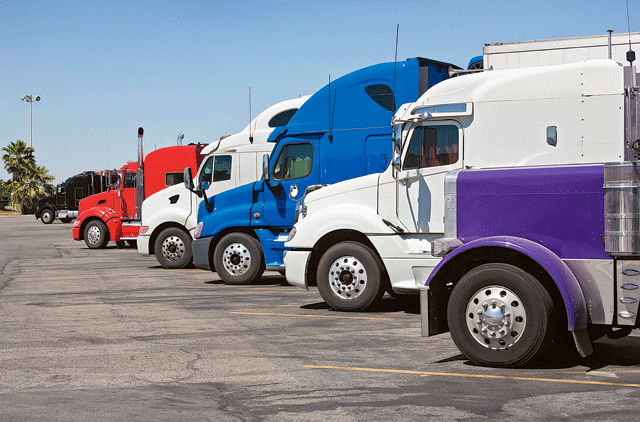The times when truck manufacturers were just assemblers of heavy-duty vehicles made of steel and equipped with massive diesel engines are gone. Today, the truck manufacturing industry has emerged into a highly innovative ecosystem that uses special designers, IT experts and entrepreneurs to improve efficiency and safety of their vehicles.
Market and technology developments are the major drivers behind fundamental changes in truck technology expected over the next decade. There are two different developments happening here. To move freight with trucks better, one focus lies on innovative fleet management by implementing high-tech telematics solutions, as well as vehicle diagnostics, maintenance planning and car sharing management solutions. The other focus, however, still lies on the hardware, namely engines, tyres, batteries, materials and parts, as well as the design of a truck and the manufacturing process itself.
Improving efficiency
“Innovations in truck technology are really a game changer,” says Jorgen Christensen, Chairman, Joint Transport Research Centre, OECD and the International Transport Forum, adding that the main drivers for change are innovations in truck engine and vehicle technology which aim to improve fuel efficiency and reduce emissions of CO2, as well as improve truck efficiency by increasing payload capacity, improve compliance with regulations and improve safety and truck operations through the adoption of driver support and communication systems.
The biggest trend in truck engine and vehicle technology is the move to a hybrid system to support and eventually replace diesel engines, and also to introduce more efficient battery technologies. Swedish truck maker Volvo is only one of the big players who are successfully developing hybrid technologies. In a first step, it has modified buses with a plug-in hybrid module consisting of an electric engine powered by a lithium-ion battery that lets a bus run on electric power for about 85 per cent of the time.
“Our performance results were even slightly better than we had anticipated. The plug-in hybrid consumes less than 11 litres of fuel for every 100 kilometres. That’s 81 per cent less fuel than the equivalent diesel bus consumes,” says Johan Hellsing, Project Manager for the field test at Volvo Buses.
Volvo and a few other manufacturers namely Iveco, Daimler and Ford are also working on natural gas engines to cut fuel costs for road transport.
“Diesel is around ten times more expensive than natural gas per unit of energy. There’s switching going on all over the place,” says Mark Little, Director, GE Global Research.
Natural gas (compressed or liquefied) also emits 20 per cent less CO2 than diesel on an equivalent basis. Compressed natural gas is expected to penetrate the heavy truck market in the future. Innovation is brewing in lightweight fuel tanks to give large trucks the fuel needed to run medium-and long-haul routes.
Rolling resistance
Another focus of innovative truck technology is on tyres. As a matter of fact, nearly half of the drive resistance at constant speed comes from the rolling resistance of the tyres. In mixed traffic, every third fuel stop is related to rolling resistance. Rolling resistance changes with load and inflation pressure and marginally with speed. The smaller the tyre diameter, the higher the rolling resistance, say experts.
Truck and tyre manufacturers thus have joined forces to improve the situation. Pirelli, for example, has introduced smart tyres which — via an electronic sensor — send data simultaneously to fleet management control, indicating pressure and temperature, very much like in a Formula One car. The system is designed to provide continuous tyre monitoring, detecting irregularities and ensuring proper maintenance. All the collected data allows optimising the relation between tyre resistance and fuel consumption of a truck.
Change to single tyres
Another step is to switch from dual tyres — which have been traditionally used on the rear axle of a truck — to single tyres. For the past 100 years dual tyres have been used on the non-steering axles of heavy-duty commercial trucks to increase their load capacity and help maintain vehicle drivability in the event of a flat rear tyre. But in order to reduce rolling resistance, tyre weight, scrap rubber and to gain more storage space inside the truck’s trailer, tyre manufacturers have been working on specially designed single tyres with an ultra-low aspect ratio that allows for replacing dual-tyre configurations on trucks and buses.
These tyres are generally called super single tyres and are produced by some of the big names in the industry such as Goodyear, Michelin and Bridgestone.
“Fleet managers are primarily interested in weight savings [trough single tyres],” says Bridgestone spokesman Don Darden, “because this gets them higher mileage.”
Trucks take the tech road
Clean market and technology policies are driving everything from tyre design to battery innovation in the global trucking industry











